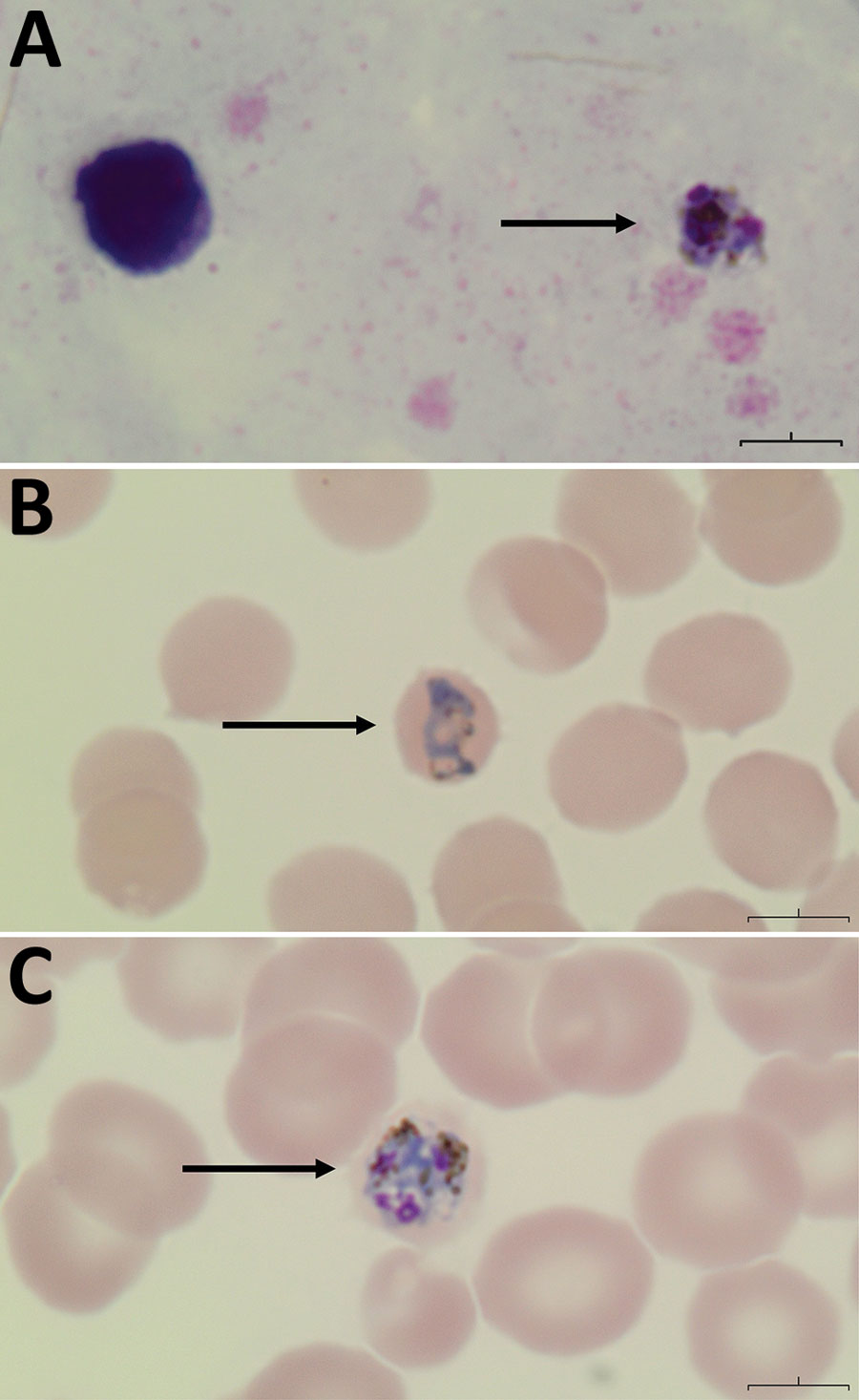Volume 29, Number 10—October 2023
Research Letter
Plasmodium knowlesi Infection in Traveler Returning to Canada from the Philippines, 2023
Figure

Figure. Peripheral thick and thin blood smears of a man in British Columbia, Canada, with suspected Plasmodium knowlesi infection after travel to the Phillippines. A) Thick smear showing P. knowlesi gametocyte.. B) Thin smear showing band form within a normal-sized, fimbriated erythrocyte with vacuoles present, similar to P. malariae. C) Thin smear showing P. knowlesi schizont form with presence of greenish-black pigment and lack of rosette formation. Original magnification x100 for all smears.
Page created: August 15, 2023
Page updated: September 20, 2023
Page reviewed: September 20, 2023
The conclusions, findings, and opinions expressed by authors contributing to this journal do not necessarily reflect the official position of the U.S. Department of Health and Human Services, the Public Health Service, the Centers for Disease Control and Prevention, or the authors' affiliated institutions. Use of trade names is for identification only and does not imply endorsement by any of the groups named above.